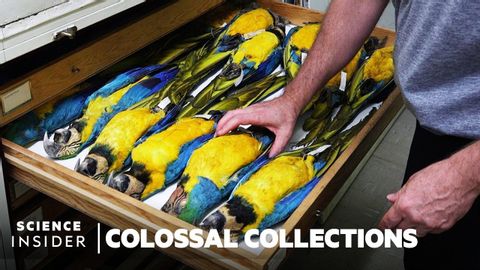スミソニアン博物館に60万羽以上の鳥類標本が保存されている理由|巨大なコレクション (Why Over 600,000 Bird Specimens Are Preserved At The Smithsonian | Colossal Collections)
林宜悉 が 2022 年 09 月 10 日 に投稿  この条件に一致する単語はありません
この条件に一致する単語はありません- adj.噛みにくい;骨の折れる : つらい : きつい;厳しい;(物が)丈夫な : 頑丈な;強い;話しづらい;暴力的な
- n.タフな人
- v.t.鍛える
- v.t./i.耐え抜く
US /ˈprɛznt/
・
UK /'preznt/
- adj.出席している;現在
- n.プレゼント;現在時制;現在;贈り物
- v.t.紹介する;司会をする;発表する;提示する;(賞を)贈呈する
- v.i.現れる
- n. (c./u.)~へ行く手段;利用する機会;アクセス
- v.t.利用可能である : 使用許可を得る
- v.t./i.アクセス;アクセスする
- v.t./i.ストレッチをする : 体を伸ばす;伸ばす : 張る : 広げる
- n.ストレッチ : 体を伸ばすこと;一続きのもの;(一続きの)時間 : 期間
エネルギーを使用
すべての単語を解除
発音・解説・フィルター機能を解除
